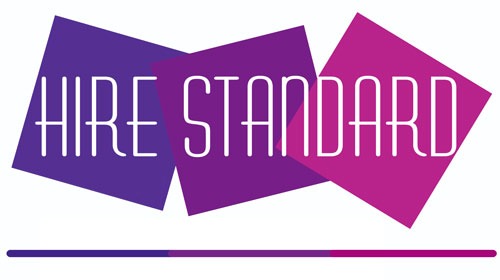Winning resumes are those that get noticed by the hiring manager and result in an interview for the job. Hire Standard reviews thousands of resumes a year; some are enthusiastically received by a hiring company and some are rejected, even though the job seeker’s experience may fit the position. Here are some easy-to-follow tips to get your resume noticed. Remember the KISS rule? Hire Standard’s advice is to keep it short and simple, but strategic. What you mention at the beginning of the document is going to set the tone and within 15 seconds, most hiring managers will decide whether to put your resume in the “No” or “YES!” pile.
Tip #1: Choose your font carefully, ensuring ease of reading and a professional look overall. DO NOT include a photo of yourself! Review your social media profiles to make sure they are accurate if you plan to include this information in your header. And make sure your FaceBook posts are appropriate, not overly personal, and that there are no compromising remarks or photos that refer to things you have done.
Tip #2: Format the document the way you would a report or other business document, utilizing bullet points, proper spacing, and proper verb tenses.
Remember that present tense is used only on your current job description; past jobs should all be described in past tense.
Tip #3: You may or may not put an “objective” at the top of the resume. Our advice is to avoid it, since the objective can eliminate you from many jobs if the hiring manager thinks you are looking for something different than they need. Instead, we support having a SUMMARY or OVERVIEW as the first part of the resume. This short (no more than two sentences) statement should encompass the best of what you have to offer based on your experience, technical skills, and personal attributes.
Tip #4: Include an ACCOMPLISHMENTS or ACHIEVEMENTS section just below the Summary/Overview section. This, too, should be brief but compelling and bulleted. Mention your quantifiable achievements (i.e. promoted within six months to a position of greater responsibility, or helped increase revenue by doing X, or reduced employer’s costs by doing Y, or selected for a peer review team, etc.).
Tip #5: Next comes your EXPERIENCE section which should have both months and years of employment at each job, beginning with your current or most recent employment and working backwards. EXTRA TIP: After mentioning your job title, give a brief description that includes the level of your direct supervisor and some of your primary responsibilities. Do not try to include everything you do or did, you will put the hiring manager to sleep! You’ll have a chance to discuss these items in detail during the interview.
Tip #6: Make sure your page breaks do not fall in the middle of a position description. If so, you’ll need to work on your formatting, so at least one job (preferably two or more) fit onto the first page.
Tip #7: Don’t assume everyone knows you are technically skilled. Make sure to include a TECHNICAL SKILLS or SOFTWARE section in the document, either right before or right after the EXPERIENCE section.
Tip #8: Only include a VOLUNTEER WORK or COMMUNITY SERVICE section if it is germane to the type of work you are seeking.
Tip #9: PROOFREAD YOUR DOCUMENT AT LEAST TWICE. Once from the beginning to the end, searching for consistency of very tenses, spelling, complete sentences, etc. Then go FROM BACK TO FRONT, one word at a time. This will help you to identify items you may have missed. This is an old proofreader’s trick and it still works….something to do with how our brains connected written words.
Tip #10: Keep a spreadsheet or other reference document to remind you where you sent your resume, when you sent it, to whom, and which job you applied for. And when the company replies, ANSWER YOUR PHONE PROFESSIONALLY AND ACCEPT THE INTERVIEW! Even if the job is not what you had hoped for, you will help yourself by honing your interview skills and may get referred for a different position.
